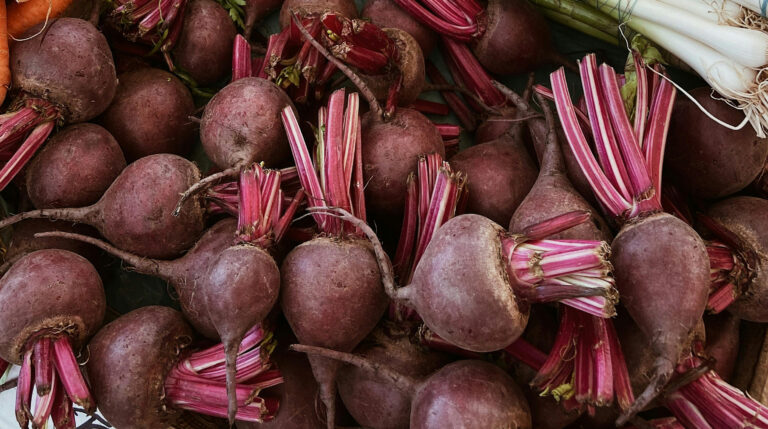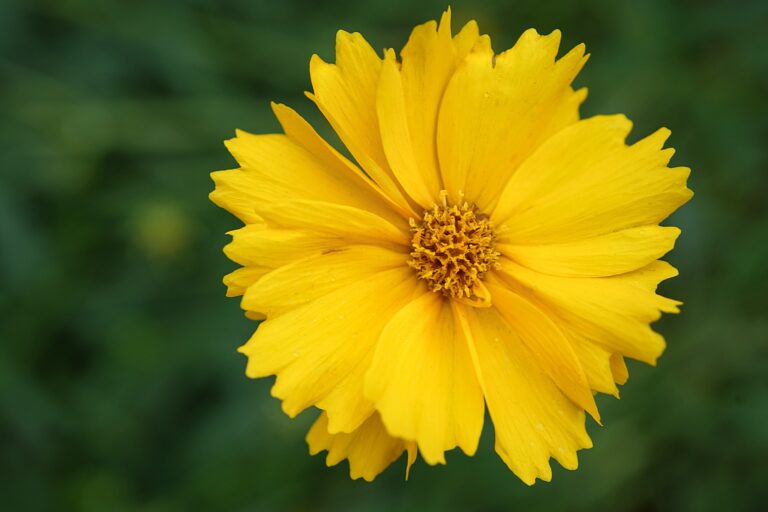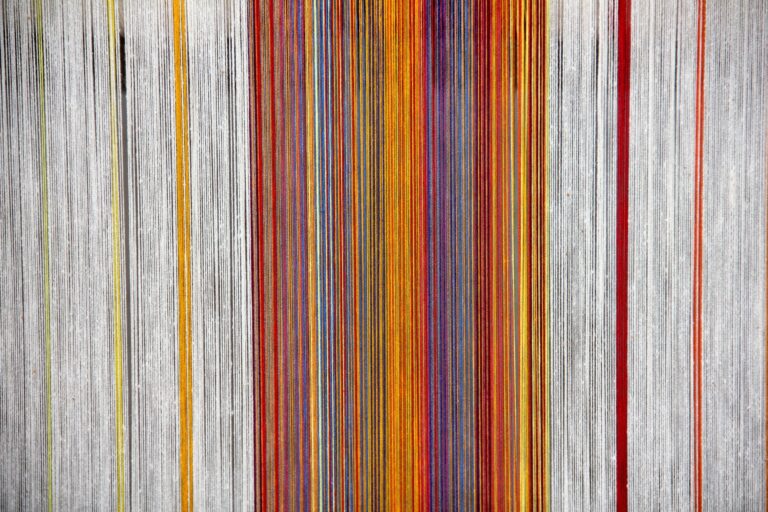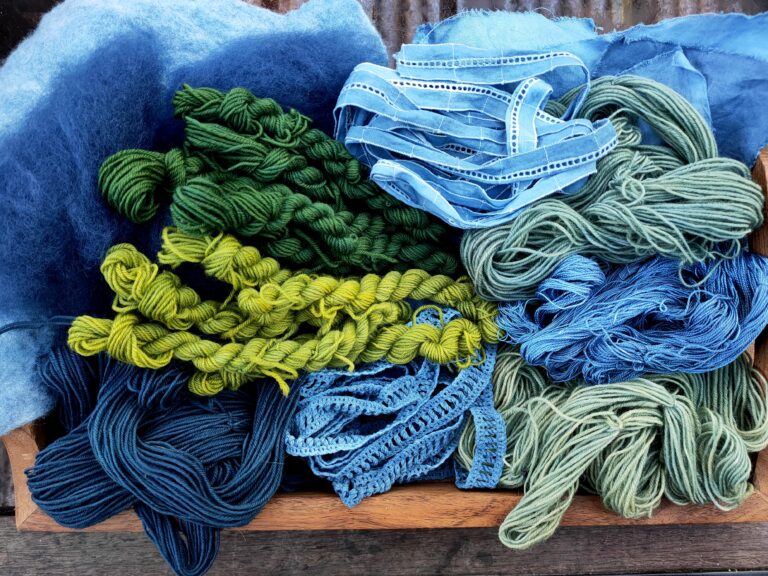Natural Dyeing with Coffee and Tea

Naturally Dyeing with coffee or tea, is an easy and fun way to begin your journey into natural dyeing. Both tea and coffee are natural dye substances, full of tannins, that make dyeing fabric and fibre easy and both washable and sun resistant.
Solar dyeing with coffee and tea
With this experiment, as with most , I am going to use the process of solar dyeing. This is a great sustainable process to use with your natural dyes.
This is basically putting your dyestuff in a glass jar and leaving it in the sun to work its magic. The beauty of living in Australia means that I do have the benefit of hot summers. If you don’t have these conditions, it does not mean you cannot try this process. You will just need to experiment with your own environments advantages and disadvantages. Leave it in a room that gets sunlight and may have great heating or try longer dyeing periods.
When dyeing with coffee and tea you really should be able to get good results just leaving your fibre in a bowl with your particular dyestuff. The procedure that I have used below is only 1 example of how to dye with coffee and tea. These experiments are only to show you what has and hasn’t worked for me, so you can pick through the information to start your own experimenting journey.

Safety Note
Always ensure when dyeing of any nature, to keep all saucepans and utensils used in the process, separate from your general cooking supplies. You do not want to cook with anything that has been used to mordant or naturally dye your fibres. You should also wear gloves and a mask while handling your chemicals.
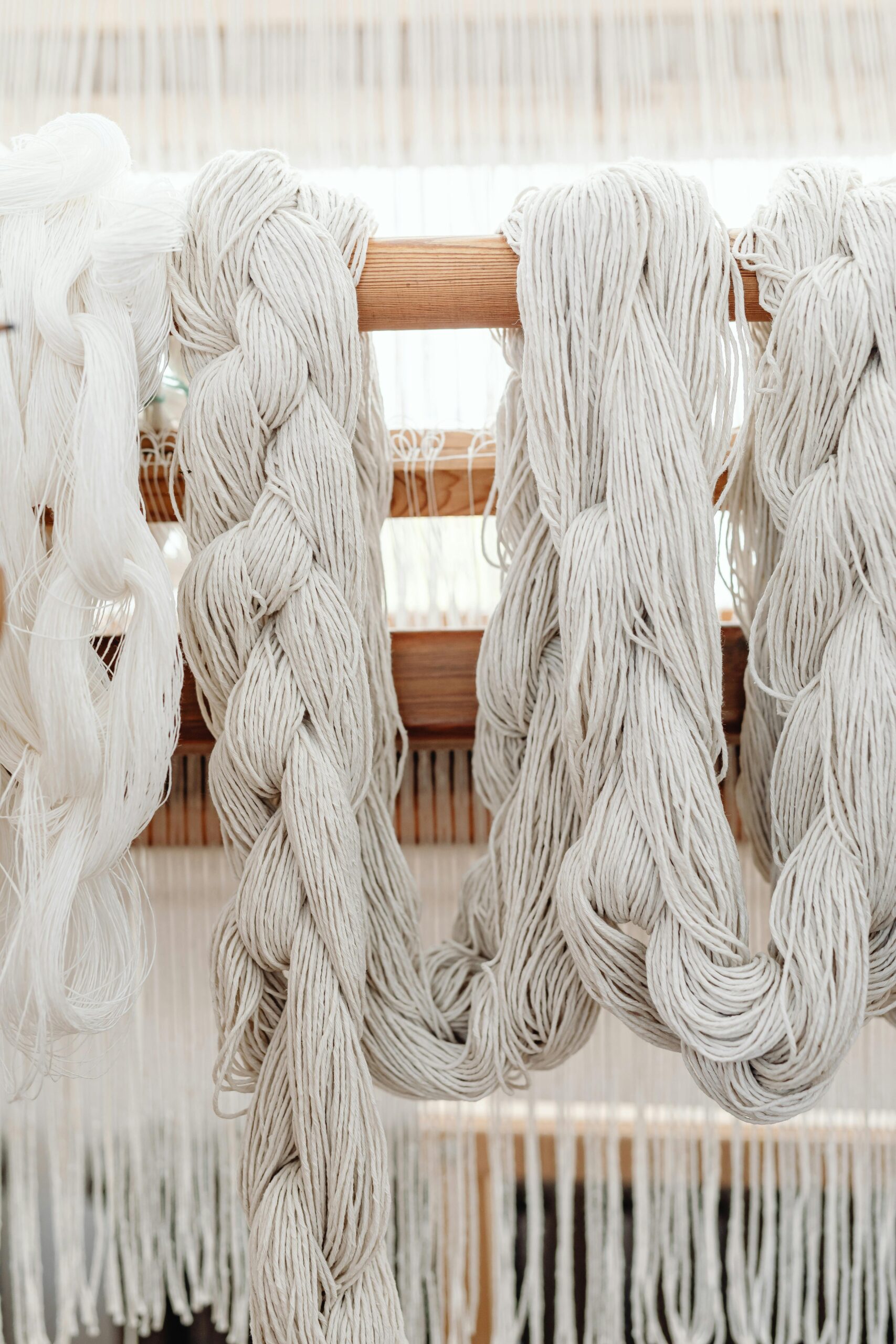
Washing your Wool
Washing Protein fibres is a little easier than cellulose fibres but still very necessary. Even if you purchase wool, clean and unprocessed, it will naturally have lanolin in it. This is what stops the sheep from getting wet. It naturally repels water and will also repel your dye.
The main thing to avoid while washing your fibre, is to not make any sudden temperature changes. Putting your wool in a hot tub, will start the felting process, and make your fibre shrink and clump together.
You should also take care not to agitate your fibre in the water too much. This will also start the felting process. Always make sure you use gentle squeezing motions while cleaning.
When washing your fibre both before or after the dyeing process, you should always use a gentle soap. You do not want a harsh detergent that will leave chemicals, that will later wash out your dye. Something like olive oil or goats milk soap will work effectively, while being much gentler on your fabric.
I personally don’t use heat while washing my wool or silk, and so far have had no problems with dyeing. Everybody’s wool however may be different and have different things added during processing , so if you are getting streaky results in your dyeing, try putting your fibre and detergent in a pot for half an hour. Keep the water temperature at a simmer. This will replace the second stage of the process below. Do not let the water boil.
Step 1: Soak bath
We need to soak the fibre first, before we do anything else. This will help the cells to open up and be receptive to the washing up detergent.
Fill a large bowl or saucepan with room temperature water, making sure that the fibre will not go through any sudden temperature changes. Make sure there is enough room for the fibre to move freely.
Add your fibre gently into the water. If you are washing wool, you may need to gently squeeze the air out of the fibres (while underwater) to stop it from floating on the surface.
Leave for at least 15 min.
Step 2: Wash Bath
Take your fibre out ( gently squeezing the excess water) and make another bath as above. This time add some gentle soap to the bath, before placing your fibre back in.
Leave for at least 30min though preferably longer.
Step 3: Rinse Bath
Take your fibre out ( gently squeezing the excess water out) and repeat step 1, allowing it to rest for at least 30 min. You can give the fibre a few gentle squeezes to help get the soap suds out. If your fibre still looks soapy you can give it an extra rinse bath until it looks clean and clear.
After washing your fibre you can move straight on to mordanting or leave to dry for a later date.

Mordanting your Wool with Alum
Measurements.
The first thing you will need to do is weigh your fibre. You will need to know how much fibre you have, to determine how much alum and cream of tartar to use in your solution. This measurement is called WOF (weight of fibre). You should always weigh you fibres when dry and free from debris.
In most instances I use 10% WOF of alum and 7% WOF of cream of tartar. Different recipes can use different amounts of alum. but unless otherwise stated, you can safely assume I have mordanted my fibres with 10%. I would not recommend going above 15% of alum, as it may deteriorate you fibres in the long run.
So if you have 100g of fibre, you will need 10g of alum and 7g of cream of tartar.
Weigh these out and dissolve them in hot tap water first.
Process
Step 1:
Place enough water in your saucepan so your fibres can move freely. The water needs to be able to easily move around and through your fabric/fibre to fully get the chemicals to penetrate.
Step2:
After weighing our fabric / fibre and calculating how much Alum and Cream of Tartar you need, dissolve them in a glass of hot tap water. You need to give them a good stir to get all of the granules dissolved. Add your dissolved chemicals into the water and stir.
Step3:
Gently add your wet fibres and submerge them under the water. You may need to gently squeeze your fibre to release air bubbles. Any air traps in the fibre will block the mordant from attaching to it. While doing this, be as gently as possible if you are mordanting wool. You do not want to agitate the wool too much as it may cause it to felt. Take your pot to the stove. Place a thermometer into the pan.
Step 4:
Turn your stove top on and allow the water to get to 80 degrees Celsius (176 Fahrenheit).
Step 5:
Leave your fibre for 40 min at 80 degrees. Do not allow your water to boil! If you are mordanting wool it will start felting when in boiling water.
Step 6:
Turn your heat off and leave the pan on the stove top to cool down. You want your fibre to cool down gradually.

I normally leave the fibre in the saucepan overnight for a bit of extra time in the mordant. You can however take it out as soon as it has cooled down to begin the dyeing process.
You can now move on to dyeing your fibre or let it dry before putting it away for future use. If you do let it dry for later, make sure to let it stand in some water again before dyeing. Your fibres will attract the dye much easier if they are wet.
I always try to mordant as big a batch of fibre as my saucepan will comfortably fit. I then hang it out to dry and re wet when I am ready to dye. I find it much more economical and quicker to batch scour and mordant my fibres.
If you are re wetting your mordanted fibres for dyeing, leave them in the water for at least 15 minutes. This allows the cells in your fibre to open up and accept the natural dye much easier. As with the earlier processes, you will need to gently place the fibre in room temperature water and gently squeeze out any air bubbles. You do not want to agitate the wool too much as it may cause it to felt.
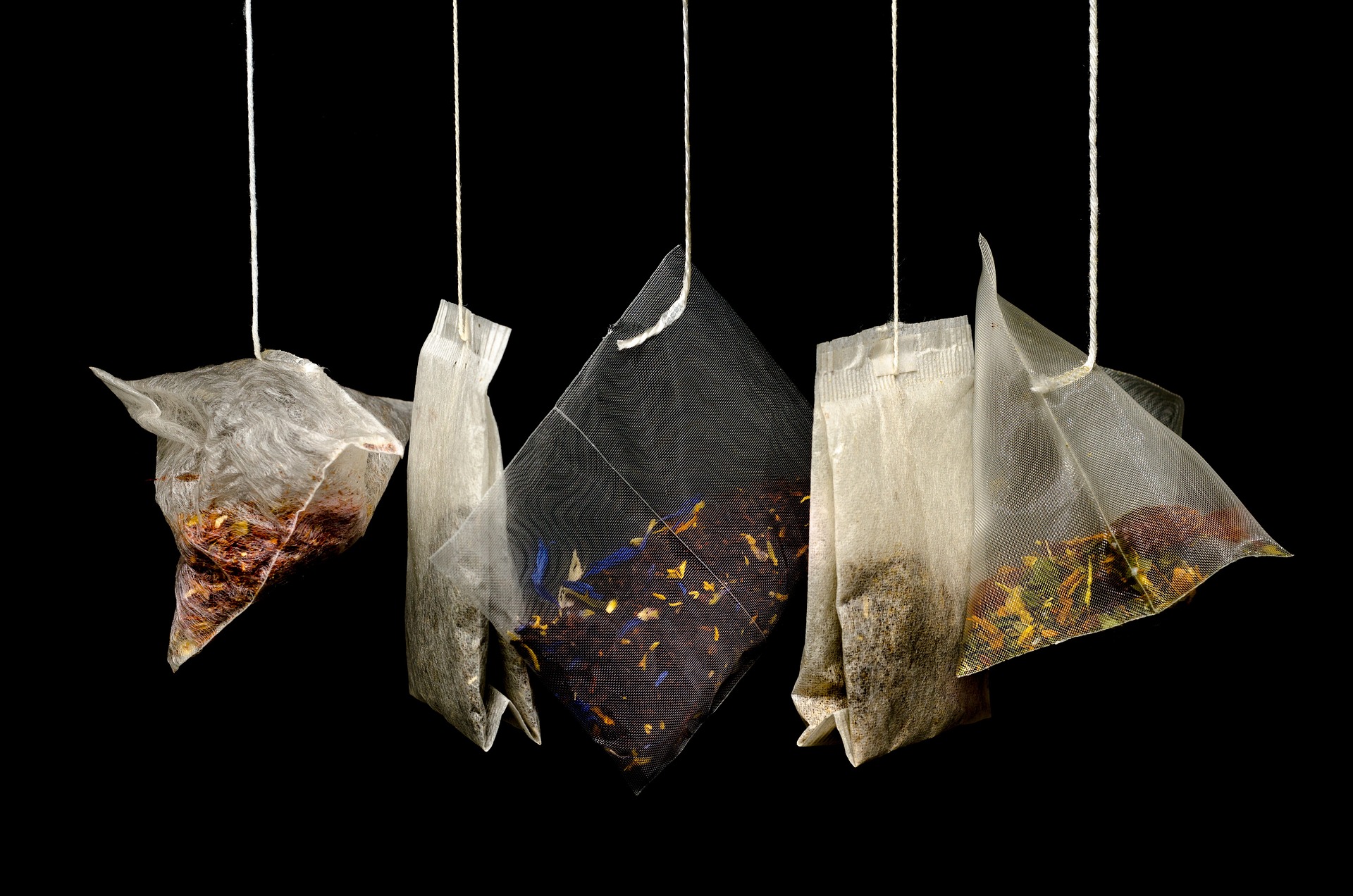
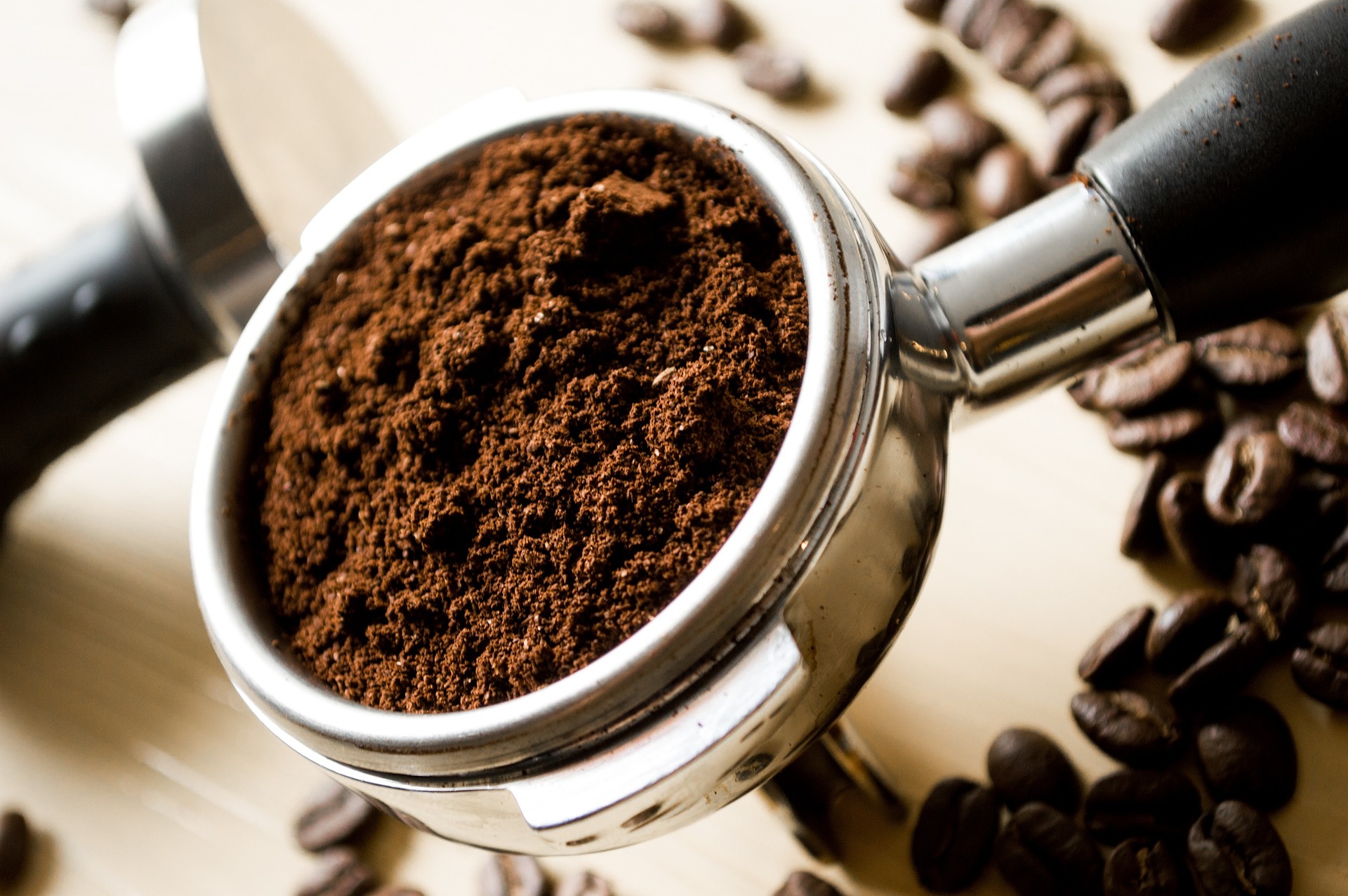
Dyeing with coffee and tea
What You will Need
Boiling water
Coffee and or tea- for this experiment I have used Ground Coffee, Greek Coffee, Yorkshire Tea and Ceylon Orange Pekoe. This was just what I had in the cupboard. Try whatever you have. The amounts I have used are:
| Type | Amount |
| Ground Coffee | 5 tablespoons |
| Greek Coffee | 5 tablespoons |
| Yorkshire Tea | 10 teabags |
| Ceylon Orange Pekoe | 10 teabags |
The amounts used are not subject to any great formula of dye stuff to fabric. I just threw in what I had. Give whatever you have on hand a go!
Wool Fibre- In this instance I have used 10g of Corriedale wool roving for each jar.
Bowl- 1 for each dyestuff.
Glass Jar- I used 4 for this experiment, 1 for each dyestuff. Your glass jars should be big enough for your dye bath to move around your fibre easily and gently. A 1 litre jar is about the smallest I would go for 10g of roving.
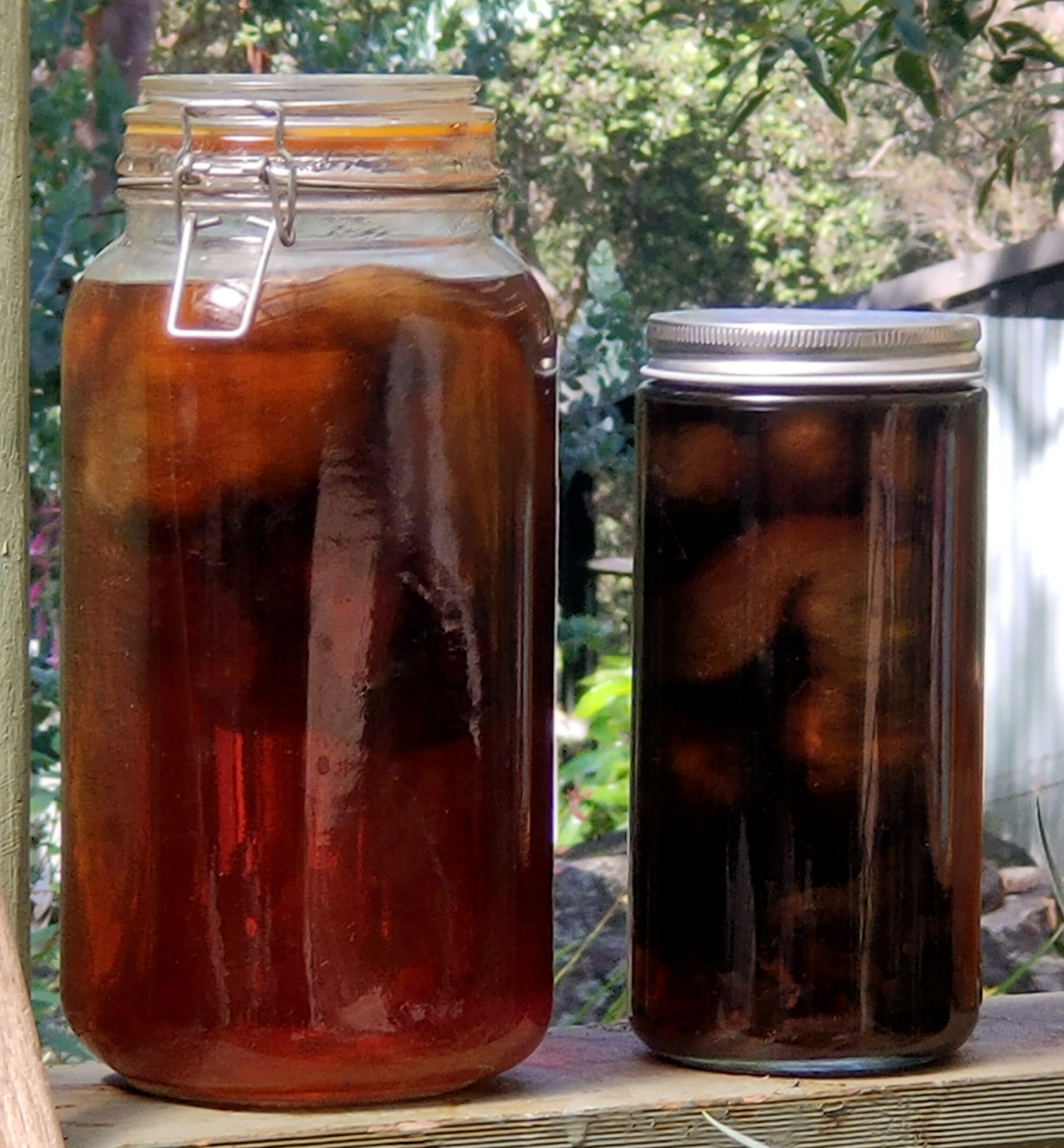
Procedure
Step 1: when dyeing with coffee and tea, place your coffee grounds and tea bags in separate heat proof bowls and add boiling water.
Step2: when cool enough, transfer your dye bath into your glass jars and leave to stew outside for one day.
Step 3: Sieve your dye liquid and add your fibre. Leave outside in the sun for 1 week. (It was summer in Australia, so was quite warm) If you don’t sieve the liquid, you will end up with little granules of coffee over your fibre. When dealing with roving this can be very painful to remove later, however if you are dyeing a fabric it may not pose as much of a problem.
Step 4: Take your wool out of the jar and leave to dry completely without rinsing.
Step 5: Rinse in water baths until they are clear. As I was using roving I did not want to use running water to start it felting, so I used a few bowls of water. Always make sure you wool does not experience dramatic temperature changes as this can start the process of felting your wool. Make your water room temperature. For the same reason you do not want to agitate your wool too much. Use gentle movements at all times. Leave to dry
Results of dyeing with coffee and tea
As you can see the colours all came out quite similar. (excuse my scribbly writing) The piece of white on the top is the original wool. Going down the page is ground coffee, greek coffee, Ceylon Orange tea and Yorkshire tea.
Across the page we have the roving after it was rinsed. Then comes the felt made from the roving. I figured that the wet felting procedure would be a good indication of how well the dye stands up to washing as it gets vigorous applications of soap and hot water. Then comes the sun test. The felt was left on a window sill for 4 weeks in the hot Australian summer to see if it would fade.
As you can see, the dye stood up to washing and sun quite well. I actually expected some fading in the 4 week period, but if anything the colours got a little darker. The greek coffee did go a little yellow after felting but that actually went darker after being in the sun. I can only assume that the yellowing came from the pH of the soap used in the felting process. I used olive oil soap which is slightly alkaline.
All up I was really quite happy with the results though I was hoping that the Ceylon orange tea would turn out more orange. That could just be because of the brand of tea I used. I don’t know, but the difference between the 2 teas is so light, I don’t think I’ll worry about using the Ceylon in the future.
I hope this helps and encourages you to try your own experimenting in the world of natural dyes. 🙂
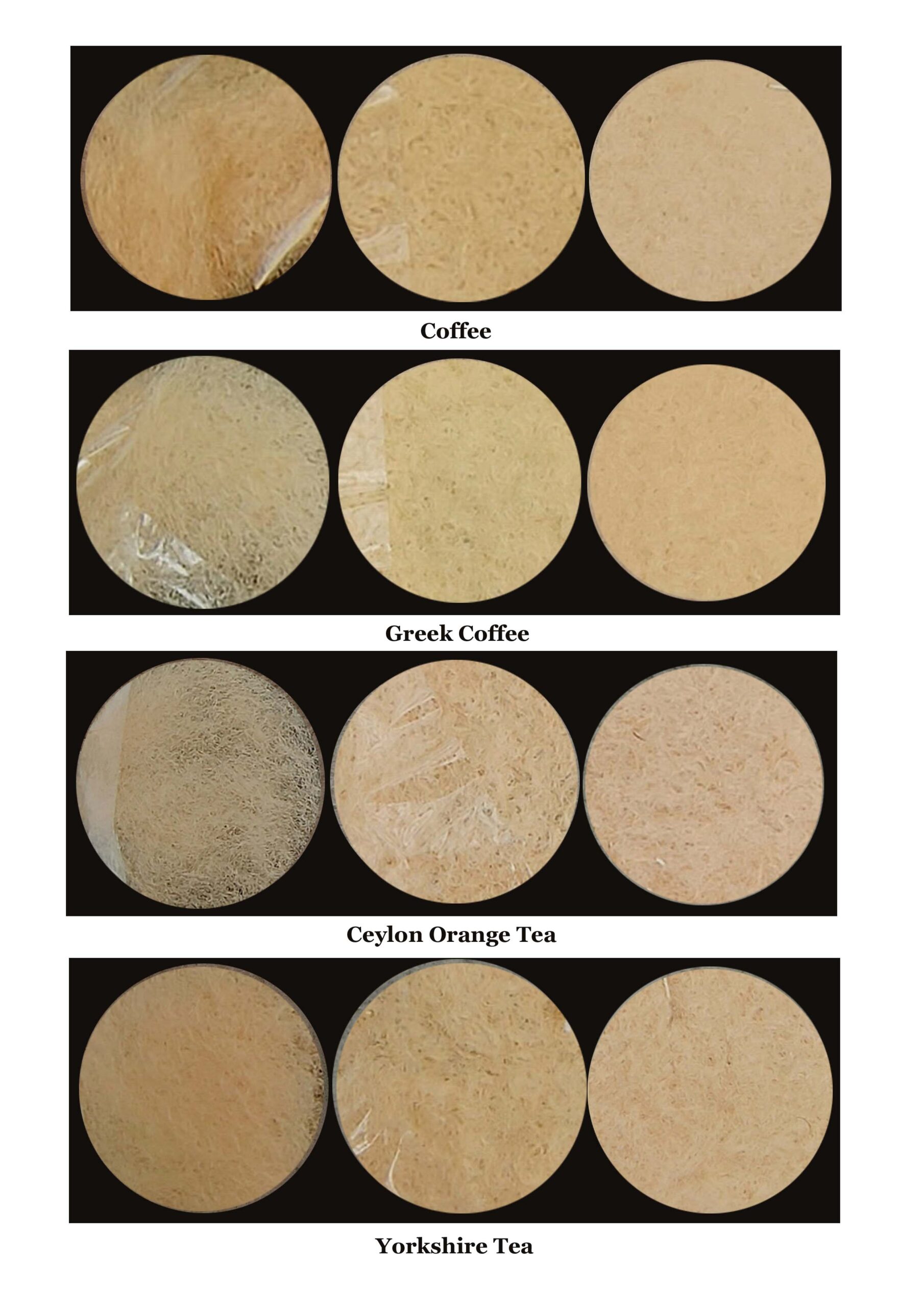

Different Mordants with Coffee
Dyeing your wool with Hibiscus Tea
Join us on Instagram www.instagram.com/DyetoCraft
Etsy Shop Now open
If you like the idea of using organic naturally dyed threads in your craft but just don’t have the time, come and have a look at our Etsy Shop where you will find an array of beautiful colours provided by nature.

